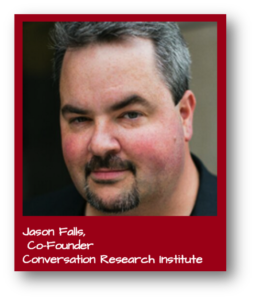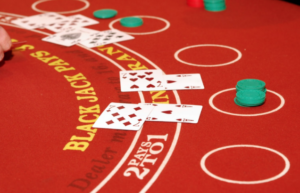Recently, Jason Falls, the Co-Founder of the Conversation Research Institute (CRI) joined members of TheCR Network for an exploration of conversation research. With years of experience in social technology, both on the agency side and brand side Jason developed the concept of conversation research. Even though people may think that this is a new concept, Jason believes community management professionals will be familiar with the premise of his work. He’s simply put a new label on it.
Based on the great discussion inside the Network we put together an infographic highlighting what Jason taught our members. Jason stress to the participants that they should not expect to replace traditional research with conversation research. Conversation research is more of a supplement to traditional research, and a great way to augment what you might already be doing.

Members can access the full roundtable report, including three case studies that Jason shared, as well as best practices for applying conversation research and lessons learned here.
Not a member of TheCR Network? Learn more and join today to have exclusive access to expert practitioners like Jason Falls – and our complete archive of over 350 roundtable reports on community management, community strategy, metrics and measurement, and more! Join TheCR Network.

 The right to privacy online is not so clear-cut when debated with the right to free speech. There is much more citizen journalism happening, but laws have been created with traditional publishing institutions in mind. These laws favor the right to free speech, which puts the right to privacy in an uncertain balance.
The right to privacy online is not so clear-cut when debated with the right to free speech. There is much more citizen journalism happening, but laws have been created with traditional publishing institutions in mind. These laws favor the right to free speech, which puts the right to privacy in an uncertain balance. 
 Incorporating gaming elements into communities not only adds value, but also enhances a member’s experience and gives them an enjoyable moment that would not have otherwise existed. Definitely, a key community must-have for staying ahead of the competition.
Incorporating gaming elements into communities not only adds value, but also enhances a member’s experience and gives them an enjoyable moment that would not have otherwise existed. Definitely, a key community must-have for staying ahead of the competition.
 Relevance:
Relevance:  Kevin asked everyone to visualize themselves hovering above a dance floor. What they would likely observe is the development of an engagement pattern. Let’s say that the most engaged people are a “five” and the least engaged people are “neutrals”. Those people who are the most engaged will aggregate towards the center. They will move closer together and will radiate the most energy. Conversely, those people on the edge will stand apart from each other with their arms likely crossed; they will not participate at the same level, nor will they emit the same level of energy. This will form a curve of participation. This same pattern of engagement and this same curve can also be seen in community engagement.
Kevin asked everyone to visualize themselves hovering above a dance floor. What they would likely observe is the development of an engagement pattern. Let’s say that the most engaged people are a “five” and the least engaged people are “neutrals”. Those people who are the most engaged will aggregate towards the center. They will move closer together and will radiate the most energy. Conversely, those people on the edge will stand apart from each other with their arms likely crossed; they will not participate at the same level, nor will they emit the same level of energy. This will form a curve of participation. This same pattern of engagement and this same curve can also be seen in community engagement.